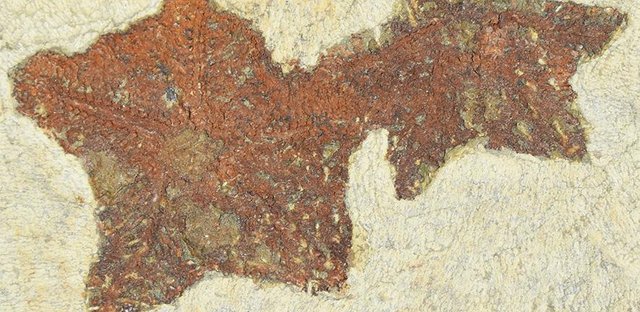The ancestors of the starfish (EN - CAST) Los ancestros de la estrella de Mar

Souce
Researchers from the University of Cambridge have discovered in the Atlas Mountains in Morocco a fossil of a marine animal that existed 480 million years ago, in the Ordovician, if we went back in time the earth would seem to us at that time an alien planet, we would have even breathing problems, since there was less oxygen, the days were even different because they were shorter they only lasted 21 hours, there were no animals on land, life was concentrated in the sea and the beings that we would see there would seem very strange, all but the ancestors of starfish like this one that has just been discovered and that shares characteristics with both modern starfish and sea lilies.
Investigadores de la universidad de Cambridge han descubierto en la cordillera del Atlas en marruecos un fósil de un animal marino que existió hace 480 millones de años, en el ordovícico, si retrocediéramos en el tiempo la tierra nos parecería en esa época un planeta alienígena, tendríamos incluso problemas para respirar, ya que había menos oxígeno, los días eran incluso distintos porque eran más cortos sólo duraban 21 horas, no había animales en tierra firme, la vida se concentraba en el mar y los seres que allí veríamos nos parecería muy extraños, todos menos los ancestros de las estrellas de mar como este que acaba de ser descubierto y que comparte características tanto con las estrellas de mar modernas como con los lirios marinos.

Souce
The species has been called Cantabrigiaster fezouataensis , the animal has an intricate design with feathery arms similar to a lace all this being had to be fixed to the seabed by means of a cylindrical stem but it was not a plant since it fed by filtering the water with its arms, for researchers it has been how to literally find a missing link that will help us understand the origin of starfish and they hope that explain and more like, for example, why they developed five or more arms.
A la especie se le ha llamado Cantabrigiaster fezouataensis, el animal tiene un intrincado diseño con brazos plumoso similares a un encaje todo este ser debía fijarse al lecho marino por medio de un tallo cilíndrico pero no era una planta ya que se alimentaba filtrando el agua con sus brazos, para los investigadores ha sido cómo encontrar literalmente un eslabón perdido que nos ayudará a entender el origen de las estrellas de mar y esperan que expliquen y más como, por ejemplo, el por qué desarrollaron cinco o más brazos.
study source / fuente del estudio

Thank you for visiting my blog. If you like posts about #science, #planet, #politics, #rights
#crypto, #traveling and discovering secrets and beauties of the #universe, feel free to
Follow me as these are the topics I write about the most. Have a wonderful day
and stay on this great platform :) :)
Gracias por visitar mi blog. Si te gustan las publicaciones sobre #ciencia, #planeta, #politica, #derechos
#crypto, #traveling y descubriendo secretos y bellezas del #universo, siéntete libre de
seguirme, ya que estos son los temas sobre los que más escribo. ¡Tenga un día maravilloso
y siga en esta gran plataforma :) :)